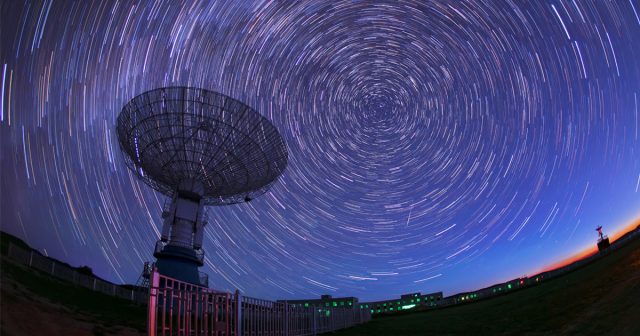
Still, the new signal has properties that don't match those from the radio transients. But researchers don't know much about those objects either, except that they emit low-frequency, highly polarized radio waves with no detectable X-rays.

The mysterious radio signal shares some traits with signals from a class of objects called "galactic center radio transients" that were discovered in the 2000s. "It could be a very very cool star that is too weak to detect the visible light from but has bright radio flares."

stars) typically emit visible light, which is why we ruled out a normal star as one of the possible interpretations for this object," she wrote. In an email, Murphy told Insider "that is part of what makes it unusual." "The brightness of the object also varies dramatically, by a factor of 100," Wang said in the release. Murphy and Wang are not talking about visual brightness - a "bright" radio signal is just a strong one. This behavior was extraordinary," Tara Murphy, a professor at the University of Sydney who is Wang's PhD supervisor, said in the release. "This object was unique in that it started out invisible, became bright, faded away, and then reappeared. That was strange, since the six signals they'd caught with ASKAP had each lasted for weeks. Then they turned to a different radio telescope - the MeerKAT observatory in South Africa - and observed the area for 15 minutes every few weeks.įinally, they caught the radio signal once more, but it disappeared in a single day. So they switched back to radio waves, at first using Australia's Parkes radio telescope, but they lost the source of the signal and couldn't detect anything for a while. In it, Wang and his coauthors concluded that the mysterious source of this radio signal "may represent part of a new class of objects." The radio signal disappeared for months, reemerged suddenly, then vanished again We've never seen anything like it," Ziteng Wang, the lead author of the new study and a PhD student in physics at the University of Sydney, said in a press release.Ī paper describing the discovery was published Tuesday in The Astrophysical Journals. "The signal switches on and off apparently at random.

Most objects in the galaxy, by contrast, don't change much year to year - and therefore nor do their radio waves. The waves, originating near the center of the Milky Way, don't seem to be coming from any kind of star, planet, or space rock that scientists have seen before.Įven stranger, the strength of this signal has waxed and waned dramatically over just a few months. But researchers at the University of Sydney recently detected radio signals that do not match any known types. Mysterious radio waves are emanating from the heart of our galaxy, and astronomers don't know what's making them.Īll celestial objects emit radio waves - planets, stars, dead stars, and even asteroids.

The signal doesn't look like the kind that comes from stars, planets, or even dead stars. The waves' origin is unknown, so they hint at the existence of a new type of celestial object. Stefica Nicol Bikes/ReutersĪstronomers detected mysterious radio waves from the center of the galaxy that vary dramatically and seem to shut off at random. The radio telescope at the Parkes Observatory at sunset near the town of Parkes, Australia July 15, 2019.


 0 kommentar(er)
0 kommentar(er)
